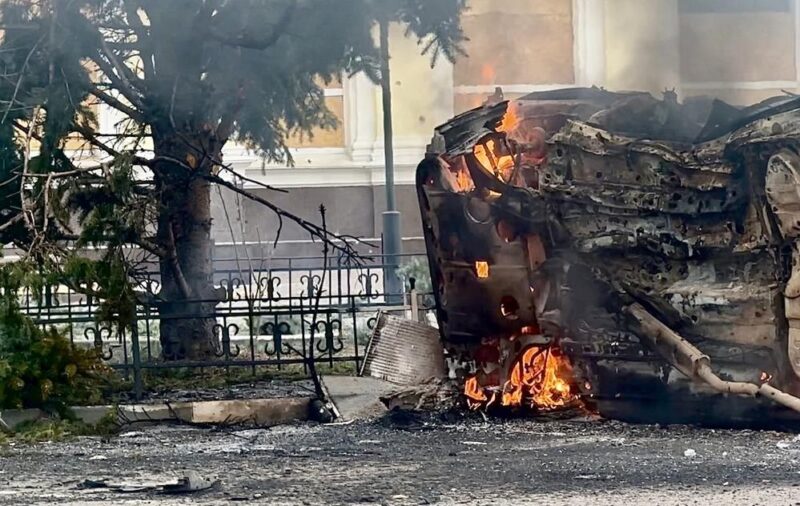Russia's terror against civilians in Kherson has now reached unprecedented levels. The terrifying "human safari" tactics, in which Russian killer drones target Ukrainian civilians across the Dnipro River, have now followed an artillery bombardment to create a deadly "double tap" combination.
This calculated approach first drives civilians to take cover from shell fire, then hunts them with drones as they flee - all while specifically targeting ambulances and rescue workers responding to the initial casualties. On 27 March 2025, this deadly innovation turned downtown Kherson into an apocalyptic scene of black smoke, scattered bodies, and civilians trapped without power or water as they counted two dead and six wounded.
The assault severed power and water supplies across the city and damaged critical infrastructure including the train station.
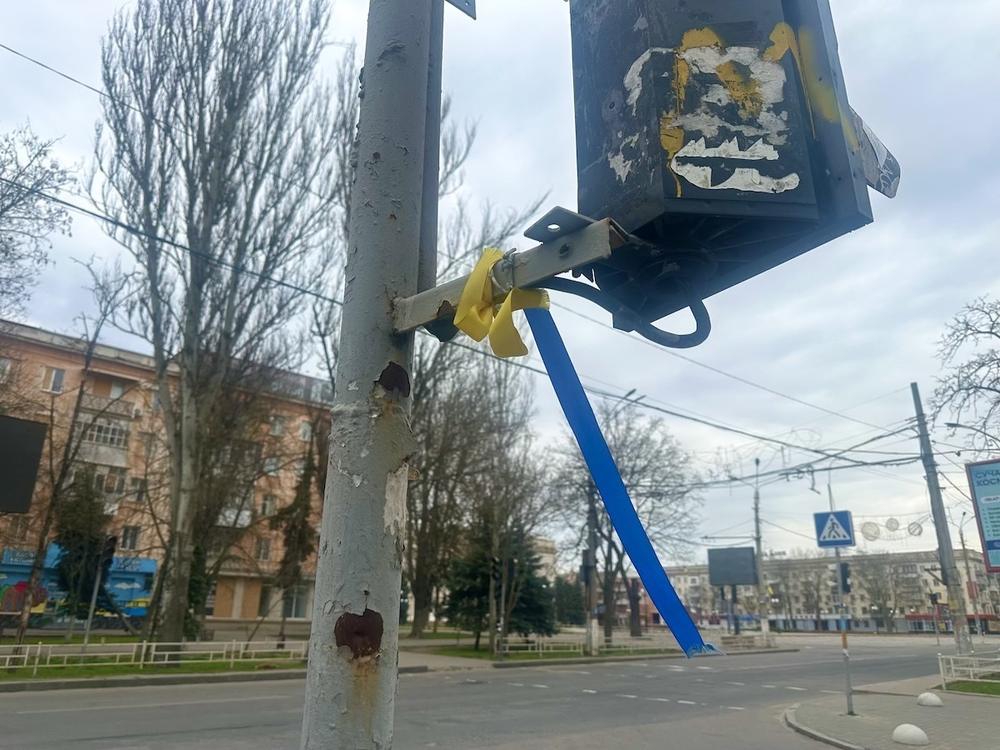
The assault began in the early morning with drone attacks on civilians. A 68-year-old woman was killed by a "human safari" drone, while a 59-year-old man sustained injuries and was hospitalized. Another victim, an 82-year-old woman, suffered a contusion and head wounds. Olha, a Kherson resident and a family grocery store owner, like many, could not leave her home, and lost the Internet and power.
A gas pipeline caught fire following a strike, and as emergency responders worked to extinguish the blaze, drones targeted them.
Just past midday, Russian forces intensified their assault, launching nearly 40 artillery shells into downtown Kherson between 12:30 and 14:30. Black smoke covered the sky as a disturbing new tactic emerged: artillery shelling combined with a coordinated drone hunt for civilians and first responders. Reconnaissance, kamikaze, and "skid" drones buzzed through the air, dropping explosives at near-constant intervals of about every five minutes.
By 13:00, the city had lost power. The railway station square resembled a war film. Power cables hung from shattered poles. A vehicle was burned on its side. Debris littered the roads and sidewalks. The train station, already damaged from previous attacks, took another hit—windows, previously covered with plywood, were once again shattered. Water supply infrastructure and electrical cables suffered additional damage.
A Kherson–Lviv train was struck, and one wagon sustained damage. Passengers and staff had taken shelter, preventing further casualties. The strike delayed the train's departure by 1.5 hours.

Hi, I'm Zarina, a frontline reporter for Euromaidan Press and the author of this piece. We aim to shed light on some of the world's most important yet underreported stories. Help us make more articles like this by becoming a Euromaidan Press patron.
Casualties and targeting of rescue efforts
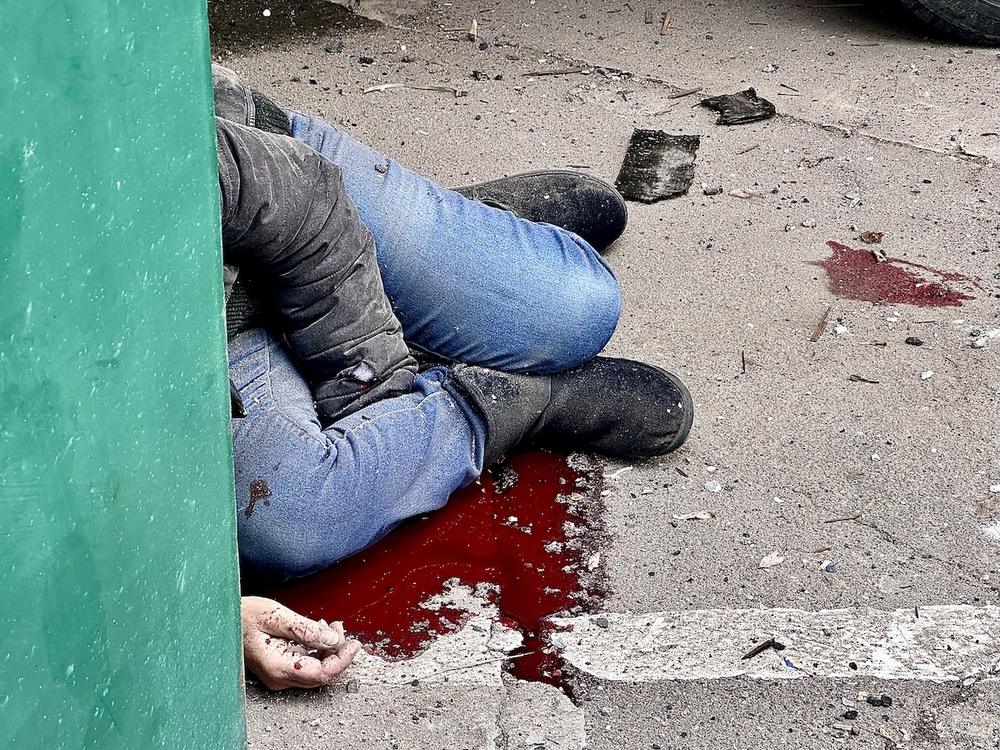
Confirmed casualties included two fatalities and six wounded as of 21:00.
A woman in her 50s was killed by an artillery shell at a construction materials depot where she worked. Her body remained at the scene for some time, as ambulance crews could not retrieve it due to ongoing drone attacks. As Euromaidan Press examined the destruction site around 14:30, a "skid" drone circled over the area, eventually dropping explosives, while the body sat in the corner of a parking lot in a puddle of blood.
A young man at the same site was injured and hospitalized. Public transport ceased operation due to the power outage, leaving residents stranded at bus stops. One man was injured while waiting for transportation.
A Russian drone struck an ambulance transporting the previously injured 59-year-old man, reinjuring him and wounding the driver and medical staff.
Among the injured were a military administration videographer and a local video blogger, both documenting the destruction when they were caught in the attack.
At 16:00, shelling resumed. On Freedom Square, Euromaidan Press spoke to a young woman carrying a toddler in a pink coat. The family had already lost their home and was living in a hostel, today without power or water. She was walking to the central supermarket under shelling to buy baby food.
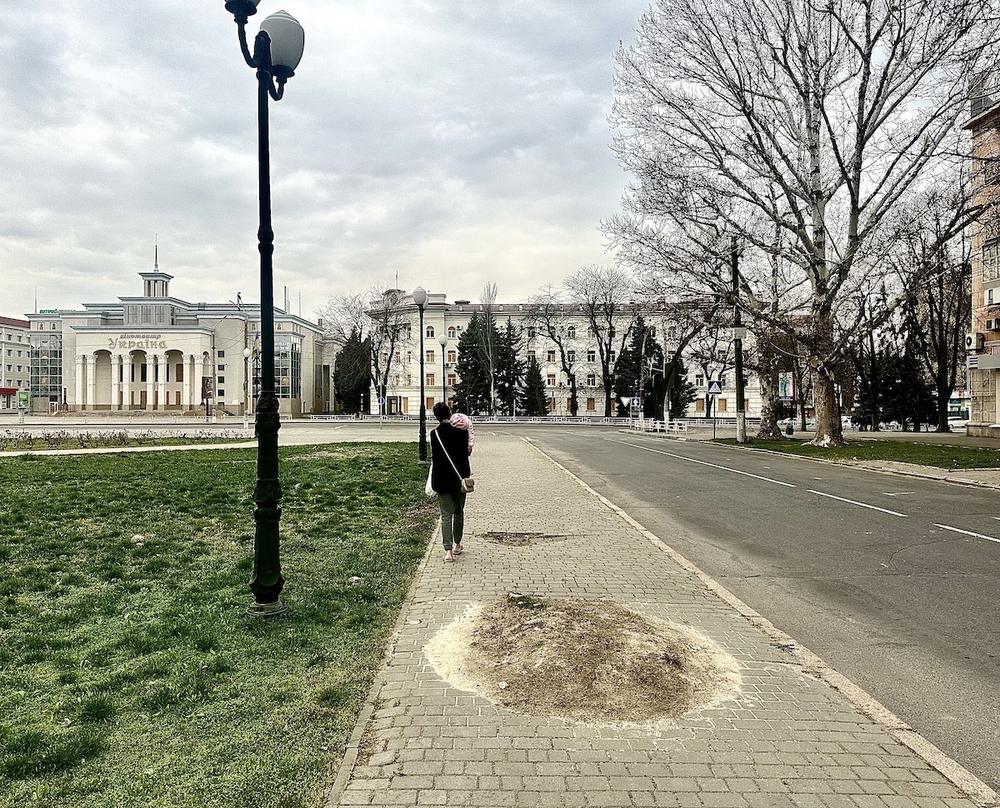
Daily life under attack
By the end of the work day, Kherson was still without power and water. Postal services halted deliveries. Yoga classes and small theater performances at underground shelters were canceled. Grocery stores remained open, but most operated without electricity, relying on generators. People sought shelter inside shops, waiting for the shelling to stop.
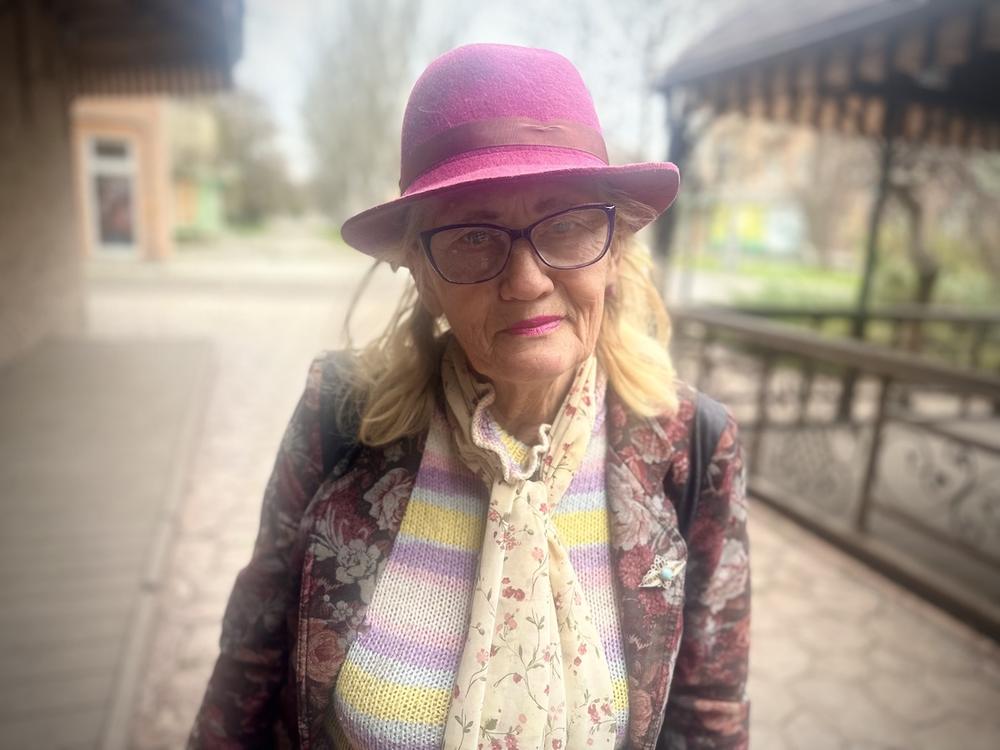
Lydia, in her 80s, wearing a dashing pink hat and scarf, a yellow-and-blue sweater, and carrying matching flowers, stopped by the street corner to catch her breath.
"It was loud, but I am not afraid," she said. Leaning on her walking stick. "I don't give a damn and they can go to hell. I lost two sons during this war. If needed, I will take a Kalashnikov myself."
Since its liberation in November 2022, Kherson has been called "the most dangerous city in Ukraine." Positioned on the front line, only one mile away from the Russian military positions in some places, it remains under constant fire from Russian forces occupying the left bank of the Dnipro River.
Since July 2024, the Kherson Oblast has endured daily "human safari" drone strikes, in which Russia targets civilians, rescue workers, and critical infrastructure. The scale and brutality of these attacks are unprecedented. Kherson turned into a testing ground for new Russian tactics, including the systematic hunting of women, children, and the elderly.
This new twist in Russian terrorizing of Kherson -- artillery shelling combined with a "human safari"—drones hunting civilians and first responders amid the bombardment— created truly apocalyptic scenes. In a grim paradox, it coincided with "peace talks" with Russian President Putin conducted by the US administration under Donald Trump.
Despite the relentless Russian terror attacks, Khersonians refuse to surrender. Interviews with residents show a clear consensus: no one accepts the idea of the Kherson Oblast returning to Russian control.

